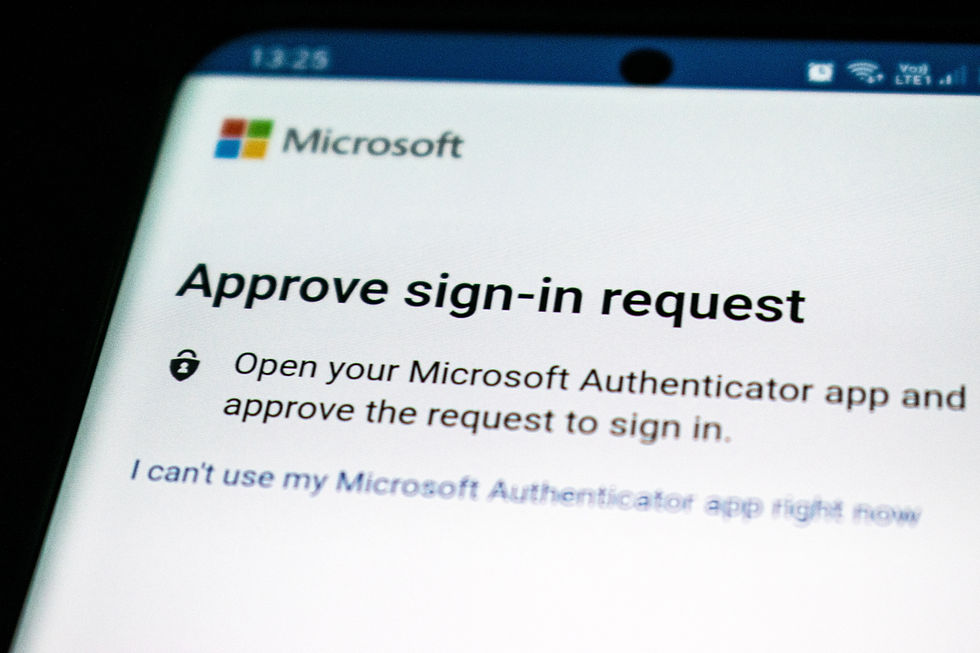Safeguarding Your Online Presence: Essential Cybersecurity Best Practices
- Rodolfo Cruz
- Jul 7, 2023
- 3 min read
Welcome back, cybersecurity enthusiasts! In our previous blog posts, we've explored various aspects of online security, from understanding common cyber threats to securing your home network. Today, we delve deeper into the realm of cybersecurity best practices, focusing on detecting compromised accounts, spotting suspicious activities, and effectively remediating any issues that may arise. In this ever-evolving digital landscape, it's essential to stay one step ahead and equip ourselves with the knowledge and tools to protect our online presence. So, let's dive in and fortify our cybersecurity defenses!
Key Cybersecurity Best Practices:

Recognizing Compromised Accounts:
Unusual Account Activity: Regularly monitor your accounts for any abnormal behavior, such as unexpected password changes, unrecognized login attempts, or unfamiliar devices accessing your account.
Notifications and Alerts: Enable notifications and alerts provided by online platforms to receive immediate notifications of suspicious activities, login attempts, or changes to your account settings.
Unexpected Emails or Messages: Be wary of emails or messages requesting personal information, login credentials, or financial details. Cybercriminals often use phishing techniques to trick users into revealing sensitive information.
Identifying Suspicious Activity:
Review Account Statements: Regularly review your financial statements to detect any unauthorized transactions or unusual activities that may indicate a compromise.
Unrecognized Devices or IP Addresses: Check the login history of your accounts to identify any unfamiliar devices or IP addresses associated with your account.
Unexpected Password Reset Requests: If you receive password reset notifications for services you didn't request, it could be an indication of an attempted breach.
Remediation Measures:
Change Passwords: If you suspect any account compromise, change the passwords immediately. Use strong, unique passwords for each account, combining uppercase and lowercase letters, numbers, and special characters.
Enable Two-Factor Authentication (2FA): Implement 2FA whenever possible, which adds an extra layer of security by requiring a second verification factor, such as a unique code sent to your mobile device, in addition to your password.
Verify App Permissions: Regularly review and revoke unnecessary permissions granted to third-party applications, as they can access your personal information or compromise your accounts.
Keep Software Up to Date: Ensure that your operating system, applications, and antivirus software are updated regularly with the latest security patches to protect against known vulnerabilities.
The Importance of Online Privacy:
Limit Personal Information: Avoid oversharing personal information on social media platforms or websites. Cybercriminals can exploit this information for social engineering attacks or identity theft.
Be Wary of Unsolicited Communications: Exercise caution when responding to unsolicited emails, phone calls, or messages. Verify the identity of the sender before sharing any sensitive information.
Educate Yourself on Social Engineering: Understand how social engineering techniques work, including phishing, pretexting, and baiting. Be skeptical of requests for personal information, even if they appear legitimate.
Congratulations, you're now armed with a robust arsenal of cybersecurity best practices to safeguard your digital life! By staying vigilant and implementing these measures, you greatly reduce the risk of falling victim to cyberattacks and data breaches. Remember, relying solely on complex passwords is no longer enough; embracing two-factor authentication (2FA) and regularly monitoring your accounts for suspicious activity are crucial steps to take. Additionally, understanding the art of social engineering and being cautious about the information you share online will further fortify your defenses. Stay informed, stay proactive, and let's pave the way for a safer and more secure digital future together!
We hope this blog post has provided you with valuable insights and practical steps to protect your online accounts. As always, feel free to reach out with any questions or share your own experiences in the comments section below. Stay tuned for more informative content on cybersecurity and emerging trends. Until next time, stay secure and happy browsing!

Comentarios